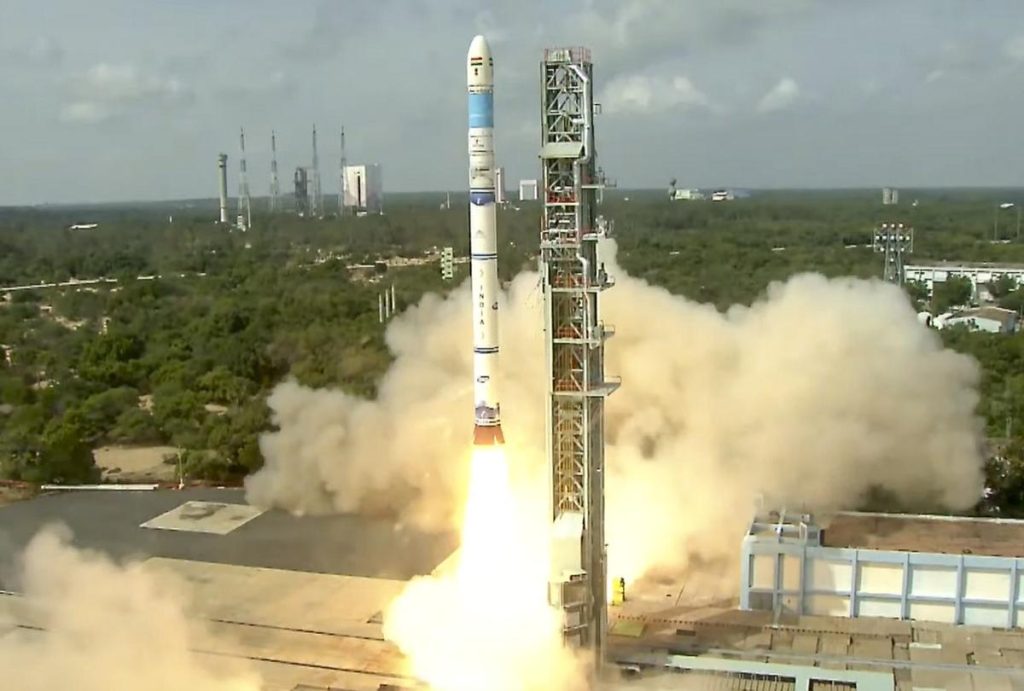Context:
Recently, ISRO successfully launched its latest earth observation satellite, EOS-08, on a Small Satellite Launch Vehicle (SSLV)-D3 from the Satish Dhawan Space Centre in Sriharikota .
More on the News: The launch marks a significant milestone for ISRO (Indian Space Research Organisation) as it completes the developmental phase of the SSLV program.
About THE EOS-08 Mission:
Mission Objectives
- Designing a microsatellite, creating compatible payloads, and incorporating new technologies for future satellites.
- Orbit and Mission DurationEOS-08 has a mission life of 1 year and a mass of approximately 175.5 kgIt generates around 420 W of power and operates in a circular Low Earth Orbit (LEO) at an altitude of 475 km with an inclination of 37.4°.
What is an SSLV?
ISRO’s Small Satellite Launch Vehicle (SSLV) is a three-stage rocket with solid propulsion stages and a liquid Velocity Trimming Module (VTM) for final adjustments.
It aims to provide a cost-effective, rapid-launch solution for satellites up to 500 kg, with the capability to carry multiple satellites at once.
Technological Advancements :
- Integrated avionics system: Combines communication, baseband, storage, and positioning functions into a single, efficient unit with 400 GB data storage capacity.
- Miniaturized Antenna Pointing Mechanisms with a rotational speed of 6 degrees per second and pointing accuracy of ±1 degree.
- Flexible solar panels with foldable substrates, GFRP tubes, and CFRP honeycomb rigid end panels for improved power generation and structural integrity
Satellite specification and Payloads:
- Electro Optical Infrared Payload (EOIR): Captures images in the Mid-Wave IR (MIR) and Long-Wave IR (LWIR) bands for day and night surveillance.
- Global Navigation Satellite System-Reflectometry (GNSS-R): Uses GNSS signals for remote sensing, enabling ocean surface wind analysis and soil moisture assessments.
- SiC UV Dosimeter: monitors UV irradiance for the Gaganyaan Mission and acts as a high-dose alarm sensor for gamma radiation, enhancing safety for crewed missions.
Innovations in Satellite Development
- X-Band Data Transmission: Utilizes pulse shaping and Frequency Compensated Modulation (FCM) for enhanced data transmission.
- Battery Management System: Employs SSTCR-based charging and bus regulation with a frequency of 6 Hz.
- Thermal Management: Incorporates advanced materials like AFE BGA, Kintex FPGA, and Germanium Black Kapton for improved thermal performance.
Indigenization Efforts:
- Solar Cell Fabrication: Advances in solar cell technology.
- Nano-Star Sensor: Designed for Microsat Applications.
- Inertial System Enhancements: Includes reaction wheel isolators to reduce vibrations and a single antenna interface for TTC and SPS applications.
- The mission also features an auto-launch pad initialization capability.

